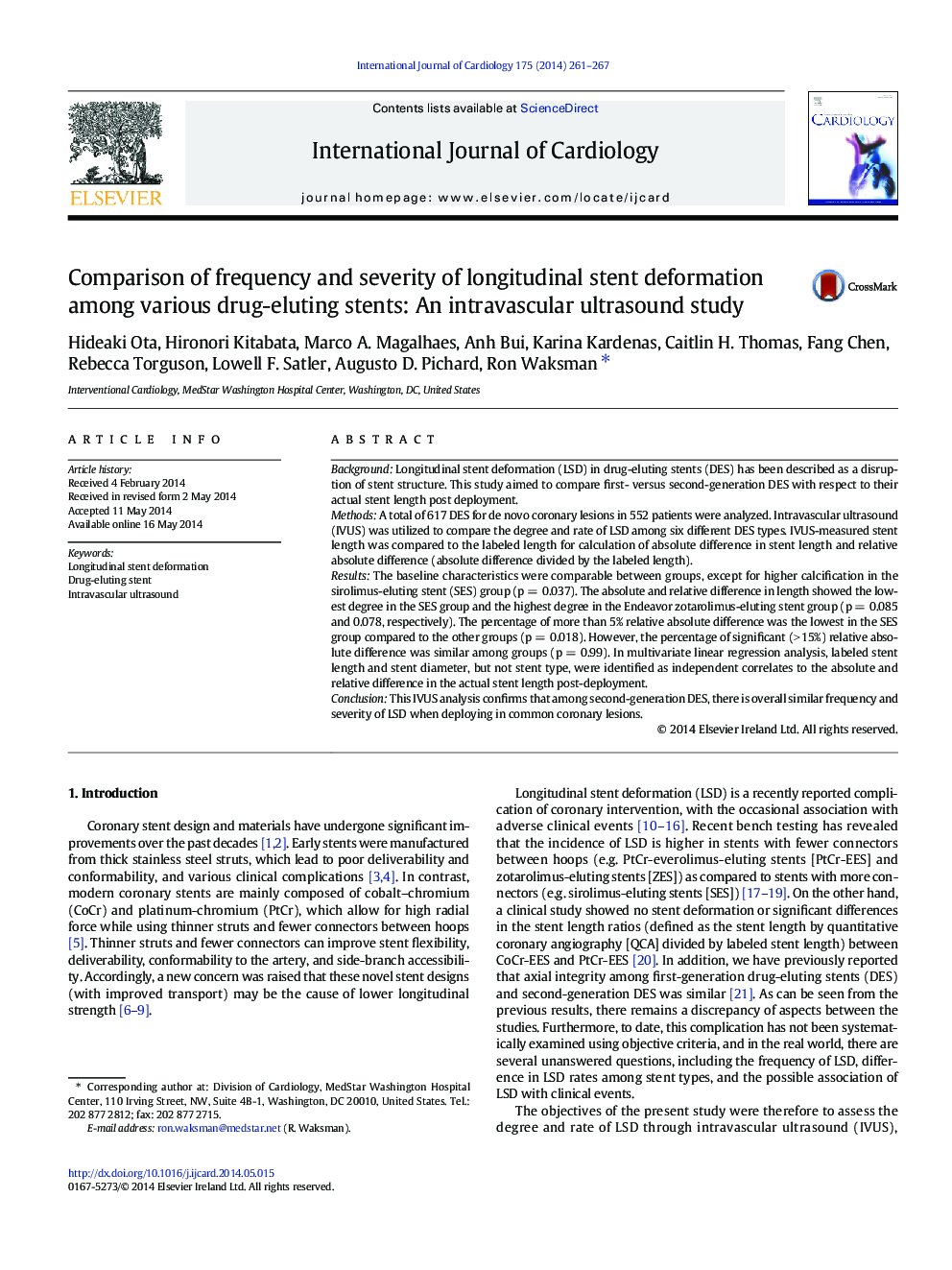| Article ID | Journal | Published Year | Pages | File Type |
|---|---|---|---|---|
| 5971145 | International Journal of Cardiology | 2014 | 7 Pages |
BackgroundLongitudinal stent deformation (LSD) in drug-eluting stents (DES) has been described as a disruption of stent structure. This study aimed to compare first- versus second-generation DES with respect to their actual stent length post deployment.MethodsA total of 617 DES for de novo coronary lesions in 552 patients were analyzed. Intravascular ultrasound (IVUS) was utilized to compare the degree and rate of LSD among six different DES types. IVUS-measured stent length was compared to the labeled length for calculation of absolute difference in stent length and relative absolute difference (absolute difference divided by the labeled length).ResultsThe baseline characteristics were comparable between groups, except for higher calcification in the sirolimus-eluting stent (SES) group (p = 0.037). The absolute and relative difference in length showed the lowest degree in the SES group and the highest degree in the Endeavor zotarolimus-eluting stent group (p = 0.085 and 0.078, respectively). The percentage of more than 5% relative absolute difference was the lowest in the SES group compared to the other groups (p = 0.018). However, the percentage of significant (> 15%) relative absolute difference was similar among groups (p = 0.99). In multivariate linear regression analysis, labeled stent length and stent diameter, but not stent type, were identified as independent correlates to the absolute and relative difference in the actual stent length post-deployment.ConclusionThis IVUS analysis confirms that among second-generation DES, there is overall similar frequency and severity of LSD when deploying in common coronary lesions.
